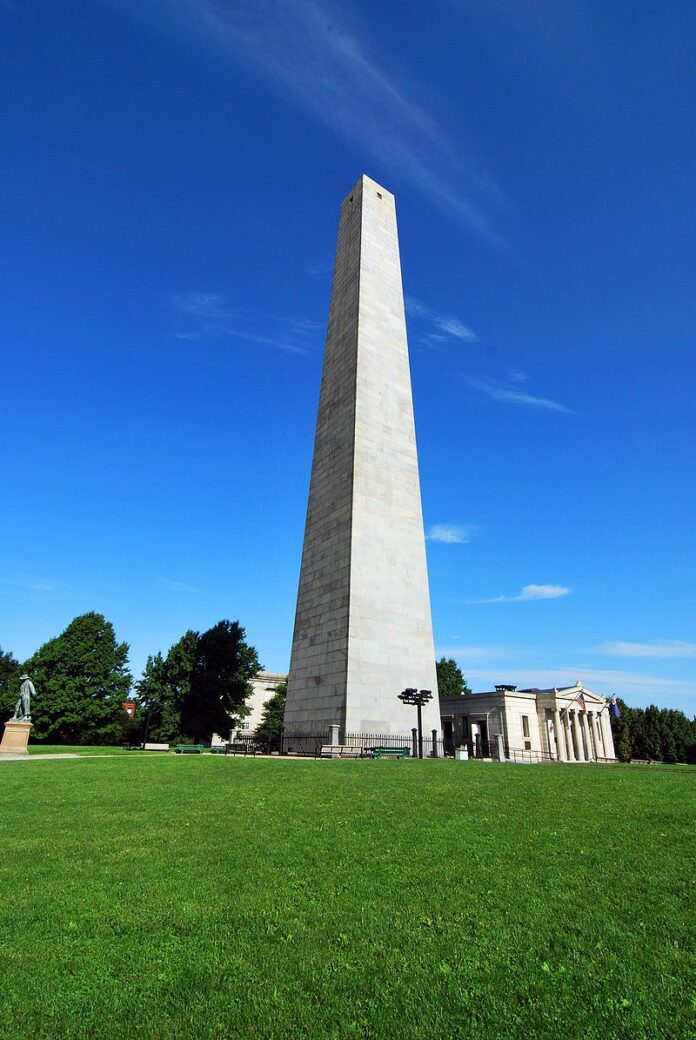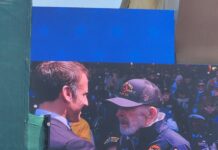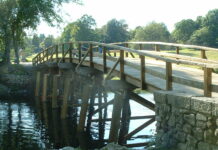BOSTON—After the battles of Lexington and Concord, Gen. Artemas Ward’s New England volunteers surrounded Boston and blockaded the land approaches. Critical to the British occupation of Boston was their control of the high ground on the Charlestown peninsula.
The Americans, upon learning that the British were planning to move to the high ground, moved forces to fortify Bunker Hill. Leading the Americans was Col. William Prescott, who had 1,200 Massachusetts and Connecticut soldiers under his command. Prescott bypassed Bunker Hill—occupying a better-fortified Breed’s Hill.
British Gen. Thomas Gage and 4,600 soldiers occupied Boston. Gage, who learned that the Americans occupied Breed’s Hill, ordered his senior officer Maj. Gen. William Howe to take the position.
Because of a shortage of boats, bad maps and strong tides, the British were delayed. This gave the colonials the opportunity to extend their fortifications by building a breastwork. An estimated 2,500 and 4,000 colonials manned the lines after reinforcements poured in.
“Col. Prescott, a veteran of the French and Indian War, was a pretty level-headed leader. Under his command, the colonials quickly built more fortifications,” said Vince Kordack, a park ranger at Bunker Hill.
By the afternoon of June 17, Howe’s initial force landed between Moulton’s Point and Charlestown. When snipers fired on the colonials, Howe ordered that Charleston be burned.
Howe’s main objective was a rail fence that ran down the slope of Breed’s Hill to the Mystic River. As a diversion, he sent Brig. Gen. Robert Pigot to lead an assault on the redoubt and other fortifications, while light infantry proceeded up the Mystic shore to outflank the colonials to their left.
Whether or not the colonials were told to wait until they saw the “whites of their eyes” to fire at the British is debatable. However, the colonials were told to wait for the order to fire.
In the ensuing battles, Pigot’s light infantry ran into a formidable stone wall that was manned by Col. Starke’s New Hampshiremen. Pigot’s attack on the redoubt also was repulsed.
Howe’s main effort also was pushed back. Howe regrouped and marched forward again in an uncoordinated attack that was beaten back along the American front. A final attack against the right and center of the American line proved successful as the British cut through the breastwork and overran the redoubt from three sides. Bitter hand-to-hand combat was needed to wrest the strongholds from the colonials.
Stark managed to hold out long enough to cover Prescott’s retreat. The surviving colonials retreated toward Cambridge, while the British pursued only as far as Bunker Hill.
One of the lesser-known heroes of the battle was former slave Salem Poor of Andover, Mass. He was singled out by Prescott and others as a brave and gallant soldier. He later fought at Saratoga, Valley Forge and Monmouth.
Out of the 2,200 British soldiers who attacked the hill, 1,034 were casualties. An estimated 400 to 600 Americans were casualties.
The British attempted no further military action outside of Boston for nine months. When Howe replaced Gage as military commander in America, the events of Bunker Hill would continue to haunt him.
The Americans learned they could stand up to the British, arguably the best army in the world at that time, in open field combat. However, they had succeeded through individual bravery, not an organized campaign.
THE MONUMENT WAS BUILT IN 1827
Situated on the highest point on Breed’s Hill, the Bunker Hill Monument is a 221-foot obelisk in a residential area. The monument was dedicated on June 17, 1843, with Daniel Webster speaking.
Not until 1976 was the Bunker Hill Monument transferred to the National Park Service to become a unit of the Boston National Historical Park. The monument has a good museum and center, with guided tours by knowledgeable park rangers. There are 294 steps to the top of the monument.
























